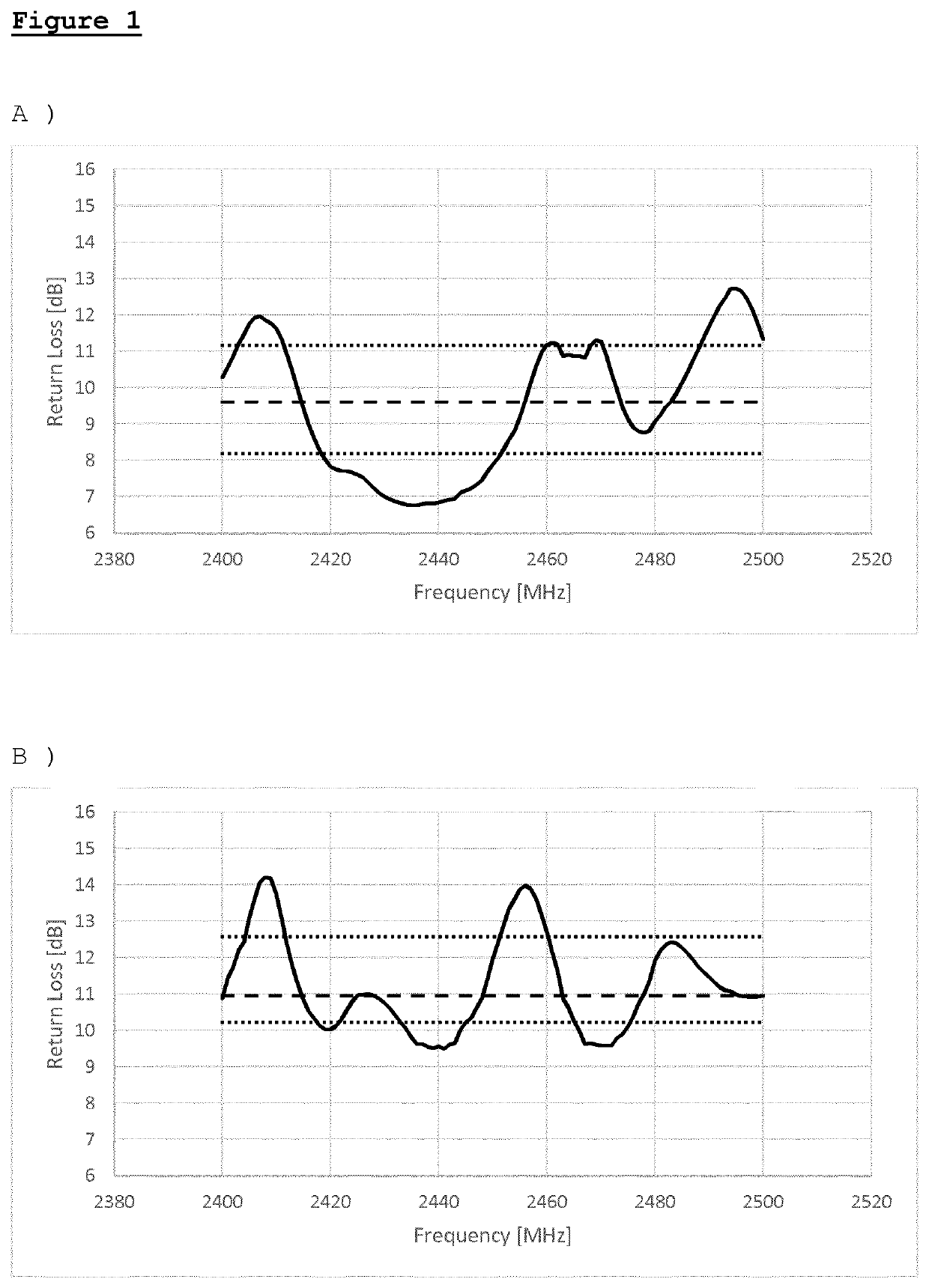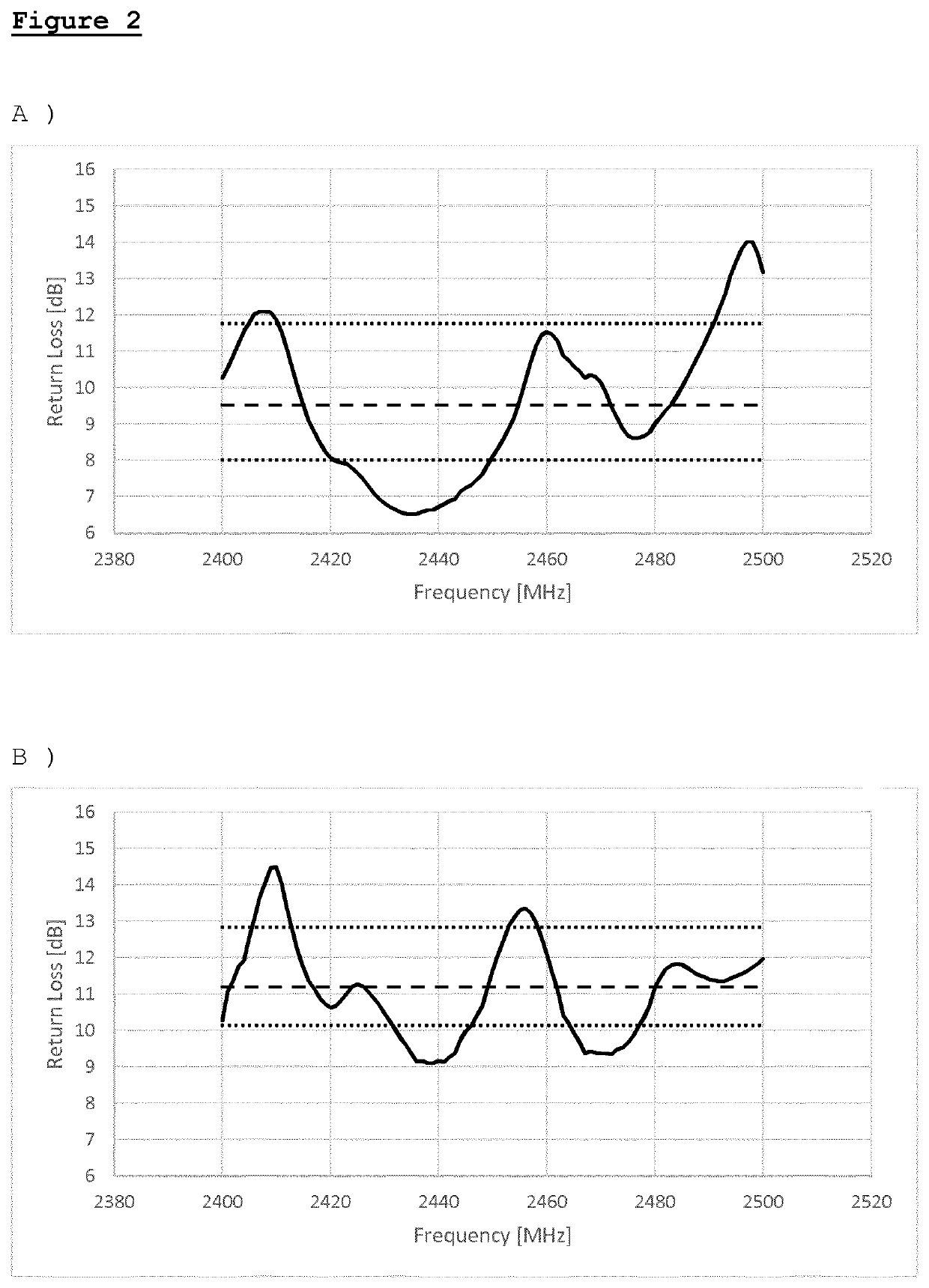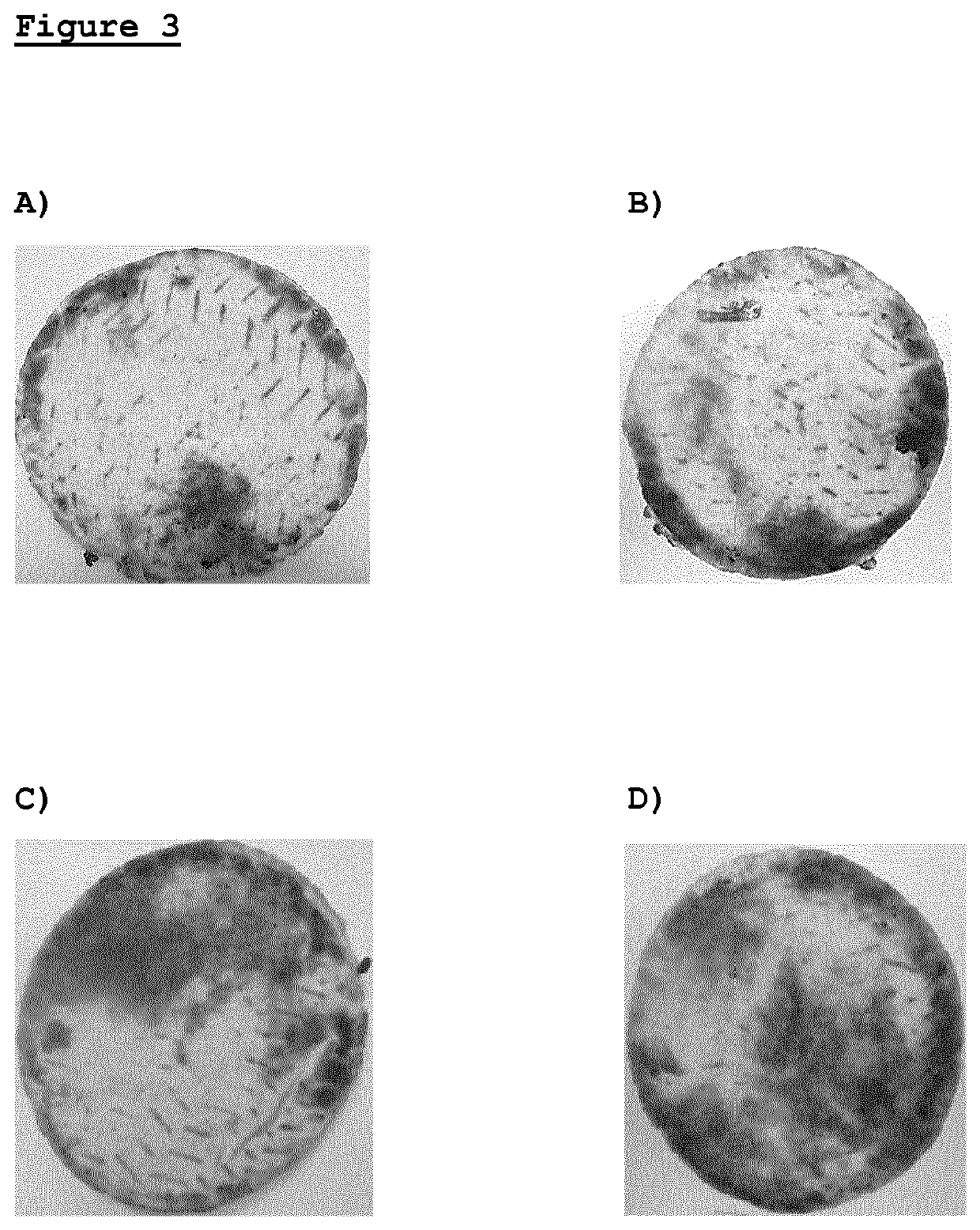Method for cooking food in a solid state microwave oven
- Summary
- Abstract
- Description
- Claims
- Application Information
AI Technical Summary
Benefits of technology
Problems solved by technology
Method used
Image
Examples
example 1
General Methodology and Description
[0045]Microwave Ovens and Their Specifications:
[0046]The following ovens were used for conducting the experiments reported herein:[0047]Standard home microwave (Sharp Carousel 1100 Watts): 1100 Watts; 11 power levels; 4 defrost options; 6 reheats options; countertop[0048]in-house developed Solid State microwave oven: Four-channel RF power amplifier (Ampleon),combined with a GE ‘Café’‘Over-the-Range’ Microwave / Hot Air oven cavity; 250 Watts / Channel; 1600 Watts convection; 3 adjustable fan speeds.
[0049]Description of the In-House Developed Solid State MW Oven:
[0050]The Solid State microwave oven used in this study is based on an NXP (now Ampleon, Netherlands) quad channel radiofrequency (RF) power amplifier combined with a GE ‘Café’‘Over-the-Range’ Microwave / Hot Air oven cavity. The quad channel system (QCS) is mobile, flexible and can be utilized by driving 1 to 4 channels coherently or independently. Each channel delivers 250 Watts between 2.4 and ...
example 2
Single Serve DiGiorno Four Cheese Pizza Product
[0065]This example highlights the results of improved browning and crispiness of a single serve pizza by optimizing the method for heating in a solid state microwave oven. The results from operating all channels at the same frequency are shown. The “Reference test” selected for this study is what a person skilled in the art would typically perform when using a solid state microwave oven, i.e. i) performing a radio frequency sweep between 2400-2500 MHz for all channels, ii) analysing the compound return loss to find the high absorption frequency, and then iii) cooking the food product at this high absorption frequency as it would be considered the most efficient way to cook the food product.
[0066]However, it might not be the optimum way to use a susceptor together with an initially frozen food product and to enhance browning and crispiness of this food product during the cooking process. In fact, the results from this example demonstrate...
example 3
Hot Pocket Products (Multi-Frequency)
[0101]This section highlights the results of improved browning and crispiness of a Hot Pocket food product by optimizing the method of heating in a solid state microwave oven. The results from operating the experimental oven at multiple frequencies (each of the four channels being operated at a different frequency) are presented. The setup of the experiment was the same as in Example 2 with the following modifications:
[0102]Sharp Carousel microwave (Magnetron 1100 Watts): The product was placed in the centre on the turntable with the use of the susceptor as directed in the cooking instruction label. The Product was cooked for 2 minutes and measured for performance.
[0103]Ampleon Experimental Solid State Combination Oven: The product was placed in the centre on the turntable with the use of the susceptor. For all trials, the products were placed exactly at the same location to ensure repeatability. The cooking methodology in the solid state oven wa...
PUM
 Login to View More
Login to View More Abstract
Description
Claims
Application Information
 Login to View More
Login to View More - R&D
- Intellectual Property
- Life Sciences
- Materials
- Tech Scout
- Unparalleled Data Quality
- Higher Quality Content
- 60% Fewer Hallucinations
Browse by: Latest US Patents, China's latest patents, Technical Efficacy Thesaurus, Application Domain, Technology Topic, Popular Technical Reports.
© 2025 PatSnap. All rights reserved.Legal|Privacy policy|Modern Slavery Act Transparency Statement|Sitemap|About US| Contact US: help@patsnap.com



